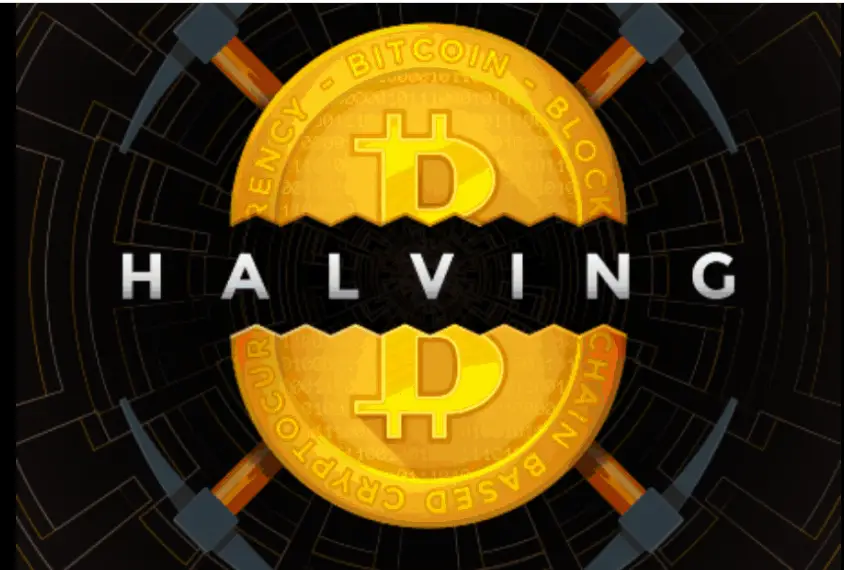Bitcoin’s evolution is marked by pivotal events, and the halving is one of its most significant. Occurring approximately every four years, this phenomenon has a profound effect on the supply of new bitcoins entering the market. As we edge closer to the next halving, investors and miners are bracing for its impact. This article unpacks the intricacies of Bitcoin halving, shedding light on its historical context and forecasting its ripple effects on the investment landscape and mining community.
Understanding Bitcoin Halving
In layman’s terms, Bitcoin-halving slashes the reward for mining new blocks in half, directly impacting the rate at which new bitcoins are created. Let’s rewind the clock: from the genesis in 2009, halvings in 2012, 2016, and 2020 have reshaped Bitcoin’s narrative. The halving is a deliberate design in Satoshi Nakamoto’s blueprint, ensuring that Bitcoin mimics digital gold by limiting its total supply, thus enhancing its scarcity and potential value.
Impacts of Halving on Bitcoin’s Value
Historical trends post-halving periods suggest a notable surge in Bitcoin’s value. The first halving in November 2012 saw the price of Bitcoin escalate from about $11 to over $1,000 within a year. The second halving in July 2016 witnessed a gradual increase from around $650 to nearly $20,000 by the end of 2017. The third halving in May 2020 had Bitcoin’s price jump from approximately $8,800 to over $60,000 in early 2021. This pattern, linked to the classic supply-demand principle, sees reduced supply often pushing prices upwards. However, it’s essential to tread cautiously—market dynamics are complex, and past performance isn’t a guaranteed indicator of future results. Experts’ opinions and market analyses provide valuable insights, yet underline the speculative nature of these predictions.
The Miner’s Perspective
Halving hits miners’ earnings directly, cutting rewards for their computational efforts. This economic shift nudges miners towards more energy-efficient mining technologies and strategies. The long-term outlook for miners hinges on balancing reduced rewards with operational costs, potentially reshaping the mining industry’s structure.
Investor Insights: Opportunities and Risks
Astute investors might recalibrate their strategies, eyeing the halving as a potential catalyst for price movements. Yet, the inherent volatility of Bitcoin demands a measured approach, recognizing both the opportunities and risks involved. Diversification and a long-term view remain prudent strategies in navigating these waters.
Astute investors might recalibrate their strategies, eyeing the halving as a potential catalyst for price movements. In this context, utilizing a reliable exchange like bitcoinme can be beneficial for streamlined trading and informed decision-making. Yet, the inherent volatility of Bitcoin demands a measured approach, recognizing both the opportunities and risks involved. Diversification and a long-term view remain prudent strategies in navigating these waters
Global Economic Implications
Bitcoin’s halving is not just a crypto event; it resonates through the global economy. Its behavior, especially in contrast to traditional financial systems, offers insights into the evolving landscape of digital currencies. The halving could be a precursor to wider cryptocurrency adoption, influencing future economic policies and practices.

Preparing for the Next Halving
The next Bitcoin halving is anticipated to occur around 2024, considering the pattern of halving every four years. Investors and miners should stay informed and adaptable, keeping an eye on market trends and technological advancements to strategically prepare for this event.
Exploring New Frontiers: Bitcoin Halving and Regulatory Landscapes
The upcoming Bitcoin halving transcends mere price movements, intersecting significantly with evolving regulatory frameworks worldwide. As governments and financial institutions grapple with the burgeoning crypto market, the halving event is increasingly under the regulatory microscope.
For instance, in the United States, the Securities and Exchange Commission (SEC) and the Commodity Futures Trading Commission (CFTC) are intensifying their focus on cryptocurrencies, potentially influencing market dynamics. Similarly, in Europe and Asia, regulatory bodies are crafting policies that could impact how Bitcoin and other cryptocurrencies operate post-halving. This evolving regulatory landscape will likely shape the market’s response to the halving, as investors and traders seek to navigate the complexities of compliance and legal frameworks.
The decisions made by these regulatory entities may also have a significant impact on institutional participation in the crypto market, potentially driving further mainstream adoption of Bitcoin.
Technological Innovations and Market Adaptations
Another pivotal aspect influenced by the Bitcoin halving is the technological advancement within the crypto ecosystem. Blockchain technology, the backbone of Bitcoin, is continually evolving, with new layers of efficiency and security being added.
Post-halving, we might witness accelerated innovation in blockchain technology, driving increased adoption and utility. Innovations like the Lightning Network aim to enhance Bitcoin’s scalability, potentially increasing its utility as a medium of exchange post-halving. Moreover, the rise of decentralized finance (DeFi) platforms and the increasing integration of cryptocurrencies in traditional financial systems showcase the market’s readiness to adapt to the changes that the halving may bring.
These technological advancements, coupled with the halving, could usher in a new era for Bitcoin, reinforcing its position as a leader in the digital currency space and a potential catalyst for broader financial innovation.
In summary, Bitcoin halving is a defining moment, intricately woven into the fabric of Bitcoin’s economic model. As we’ve explored, it influences not only the price and mining landscape but also carries broader implications for the global financial system. With the next halving anticipated around 2024, both investors and miners are advised to remain vigilant and adaptable. As Bitcoin continues to carve its niche in the financial ecosystem, these halvings serve as pivotal milestones, shaping the digital currency’s future trajectory and its evolving role in a digitally-oriented world.











